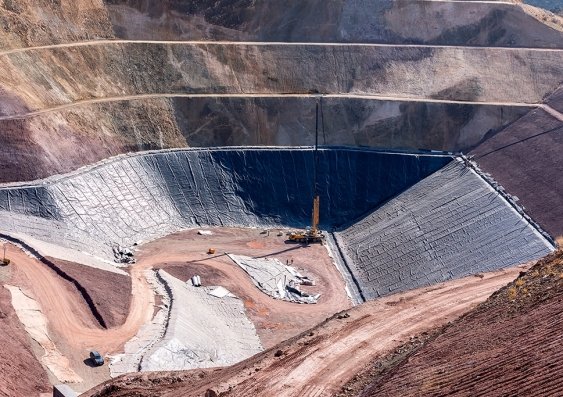Friction: Edition 10 | August 2023
FROM THE EDITOR
Welcome to the August edition of Friction. In this month's edition, we hear from industry leader Paul Davies from GroundProbe on why people are using Slope Stability Radars and how this is changing throughout our industry.
We also hear from Marcelo Llano from Red Earth Engineering as he provides his experience and knowledge on the importance of conducting a dam breach analysis. Marcelo delivers a real-life example of what happens when they go wrong, highlighting the importance of getting them right.
We also look at what’s happening in the industry across the globe, from news and trends as well as upcoming events.
Don’t forget Friction’s Associations Directory if you are interested in joining a geotechnical association in your area.
If you have a recent study or industry news you’d like to contribute to us, please get in touch at friction.news
Additionally, if you know a geotechnical engineer who’d enjoy Friction, it would be greatly appreciated if you were to forward this email or simply share any of our incredible features and contributors. You can also direct them to our sign-up link here.
Regards,
Tim Cartledge
Friction is made possible thanks to our contributors who offer up their valuable time and knowledge. If you know a geotechnical engineer who’d enjoy Friction, please forward this email to them or share any of our news and features on LinkedIn. You can also direct them to our sign-up link here.
Why we use Slope Stability Radars and how its changing
In recent years, there has been a growth in the use of slope stability radars in open cut mines. Although the primary reason has always been operator safety, a secondary benefit to improvements to mine productivity has justified increasing their usage.
In this article, GroundProbe’s Paul Davies shares the results of a survey of geotechnical engineers conducted in July 2023. The insights are astonishing.
On the consequences of getting dam breach analysis wrong
Conducting a dam breach analysis (DBA) is an integral part of the risk management of tailings facilities, they’re the process whereby a tailings facility is assumed to have breached based on a range of potential failure modes, and the outcomes are being studied to determine the potential consequences and impacts.
In this article, Marcelo Llano looks at the importance of a dam breach analysis and what happens when they aren't followed.
NEWS, PUBLICATIONS AND UPDATES
Earthquake research shaking up tailings dam safety
With roughly 250 active tailings dams in Australia, ensuring their safety is of utmost importance. University of New South Wales geotechnical expert Professor Adrian Russel said that one in four tailings dam failures are due to earthquakes.
Prof. Russel states that standards need to move towards performance-based designs to reduce the risk of a tailings dam failure and most importantly, preserve life.
4D Modelling
A new four-dimensional (4D) modelling tool is set to reshape the future of risk management and mine planning.
A mine company's social license to operate (SLO) has never been under more scrutiny than now. An SLO is a relationship between a company and the community in relation with them. For mining companies, these communities often ask questions about mine safety now and in the future.
Up until now, we have had 3D models to predict mine site failures, now enter the new 4D model.
With the help of Project 4D, the community can understand the pace and nature of occurrences such as water runoff and a flood action plan if such an event occurs.
Read the full article and how the new modelling will make a difference to our industry below.
Rock bolts
Rock Mechanic Expert, Shaloo Puri has recently shared a video on rock bolts and how they work in rock mass. From lab testing, how spacing affects the rock mass strength and the compression and shear stresses generated in the rock mass, this video is an interesting watch.
Dynamic behaviour of filtered dry stacked tailings
Discover the dynamic behaviour of filtered dry stacked tailings in a recent study from SRK Consulting. This report looks at what must be assessed to ensure its satisfactory seismic performance.
HAVE SOMETHING TO SHARE?
Friction is about connecting our industry together. If you have an article, paper or insight to share we'd love to hear from you. Find out how you can contribute to Friction here.







